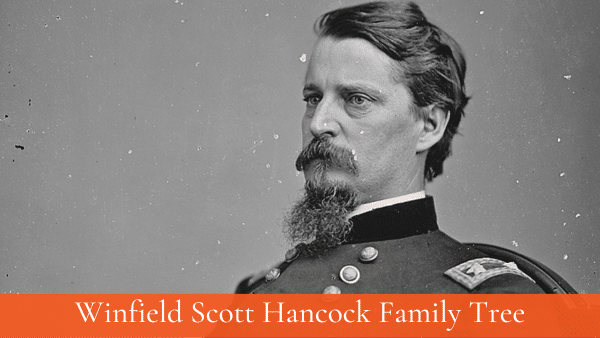Winfield Scott Hancock was a famous Civil War General who served for four decades in the military. He fought in the Mexican–American War and the Civil War, where he was known for his bravery and leadership.

Hancock's most famous service at Gettysburg was when he was sent ahead by Major General George G. Meade, took command of the units on the field, and assess the situation after Major General John F. Reynolds was killed.
Jump to:
Hancock was in temporary command of the "left wing" of the army, consisting of the I, II, III, and XI Corps. He argued briefly with the more senior XI Corps commander, Major General Oliver O. Howard, but prevailed and organized the Union defenses on Cemetery Hill as more numerous Confederate forces drove the I and XI Corps back through the town.
He had the authority from Meade to withdraw but decided to stand and fight at Gettysburg. Major General Henry Warner Slocum arrived on the field at the end of the day and assumed command until Gen. Meade arrived after midnight.
He was nicknamed "Hancock the Superb" for his performance at the Battle of Gettysburg, where he led his troops to victory against a much larger Confederate force and delivered the infamous line "There are times when a Corps commander's life does not count."
After the Civil War, Hancock continued to serve in the military, participating in the Reconstruction of the South and the U.S. military campaign against Native Americans.
He was also the president of the Aztec Club of 1847, an organization for veterans of the Mexican–American War.
In 1880, Hancock was the Democratic nominee for President of the United States. He ran a strong campaign but was narrowly defeated by Republican James A. Garfield. After the election of 1880, Hancock continued to serve in the military until his death in 1886.
Family Overview
Winfield Scott Hancock came from a well-known family in Pennsylvania.
His father was an attorney and became successful. He sent his son to West Point, where he would become a soldier in the Mexican War.
After returning from the war, he married his wife and shared a wonderful relationship with James Armistead.
He had two other siblings, but only his youngest brother would bring heirs to the Hancock name.
He and his wife had two children, but they would tragically die at a young age and never have any children.
Family Tree Chart
Parents:
Benjamin Franklin Hancock (1800 - 1867) - Benjamin Franklin Hancock was ambitious and studied law in the office of John Freedly of Morristown, being admitted to the bar in 1838. He practiced his profession all his life. He married and had three children.
Elizabeth Hoxworth (1802 - 1872) - She married and had three children. She lived long enough to see her son survive the Civil War and become a hero.
Spouse:
Almira Russell (1832 - 1893) - She and her husband had two children together. She is most known for her role in the friendship between Lewis Armistead and Winfield Hancock.
Children:
Russell Hancock (1850 - 1884) - He was the only son of Winfield Hancock. He never married and died at the young age of 34.
Ada Elizabeth Hancock (1857 - 1875) - She passed away at the age of 18 and was shown at her father's house. Her father was still alive at the time of her death.
Siblings:
Hilery Baker Hancock (1824 - 1908) - He was the twin brother of Winfield Scott Hancock but did not have military success. He did not marry or have any children but outlived his twin.
John Hancock (1829 - 1912) - Civil War Soldier. Clerk. His service in the Army began with his appointment as 2nd lieutenant to the 49th Regiment, Pennsylvania Volunteer Infantry. He was breveted a colonel of the United States Volunteers. After the war, in civilian life, he worked as a railroad ticket agent. He lived with his family in Washington, DC. He and his wife would be the Hanocks to carry on his family's name.
